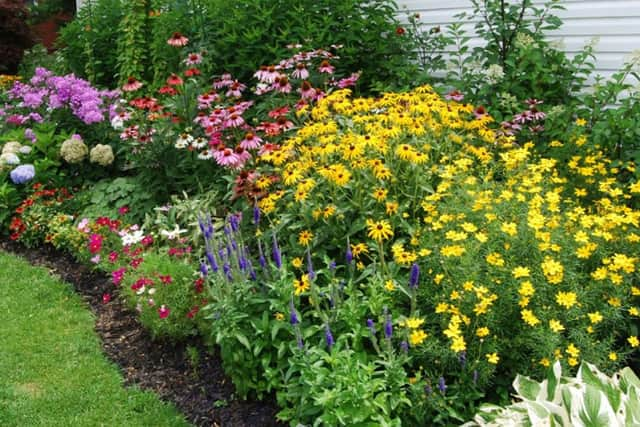How to get the youngsters back in the garden this autumn '“ Brian Kidd


I know the children have recently gone back to school but that doesn't mean they can't help you in the garden this weekend.Â
It's easy to plant some seeds of annual flowers.Â
Typically, children like to see things happen quickly but this week will give them something to look forward to '“Â we are going to plant some hardy annual flower seeds at the lowest possible cost.
Advertisement
Hide AdAdvertisement
Hide AdThese types of plants can be sown at this time of year for them to flower next summer.Â
They create a carpet of colour for many weeks and are often called cottage garden plants.
Dig a border of soil to the depth of a garden fork.
Then, rake the area over to a depth of four inches.Â
Using the rake, make the soil nice and fine.
Then apply a dressing of fish, blood and bone fertiliser using two-ounces per square yard and rake again to ensure the fertiliser is well incorporated into the top four inches of soil.
And this is the fun bit...
Give the children a broom handle and ask them to make jigsaw puzzle shapes by pushing the tips of the broom handle into the border.
Advertisement
Hide AdAdvertisement
Hide AdYou can encourage them by asking them to imagine how the colours will look, showing them the pictures of the flowers and asking them to look at the heights of the potential blooms.
This is bound to cause some arguments if it's hard to agree!
But if you don't have any youngsters around, go to the next step...
One hardy annual flower, which can be sown right now for next summer, is Larkspur.
Advertisement
Hide AdAdvertisement
Hide AdAnother is Pot Marigolds, whose botanical name is Calendula, meaning '˜flower every month' in latin.
Other hardy annuals are Godetia, Love-in-a-Mist, Cornflowers '“ a seed catalogue will help you find them.
Once the soil has been raked, the fertiliser has been mixed in and the designated areas have been decided, it's time to sow the seeds.
Put little pinches of seeds about four inches apart into the defined areas and then water the border.
Advertisement
Hide AdAdvertisement
Hide AdIn three weeks, there will be a mass of growth, including some weeds.
If some of the flower seed doesn't germinate, thin out some of those seedlings which are successful to fill any gaps.
Wait for another fortnight and then remove the weeds.Â
You will find the same weeds all over the whole bed.Â
But the flowers have their own type of foliage and the weeds need to be removed.
This is where the children can help '“ just show them the weeds, give them some gloves and promise them an ice cream at the end.
It works, I promise.Â
Tell them to be patient and wait for them to bloom next summer in different colours.Â